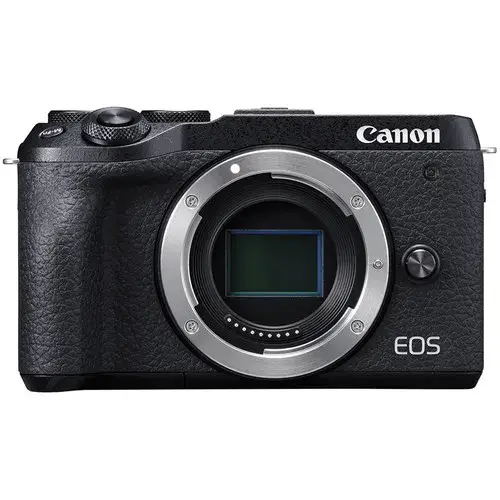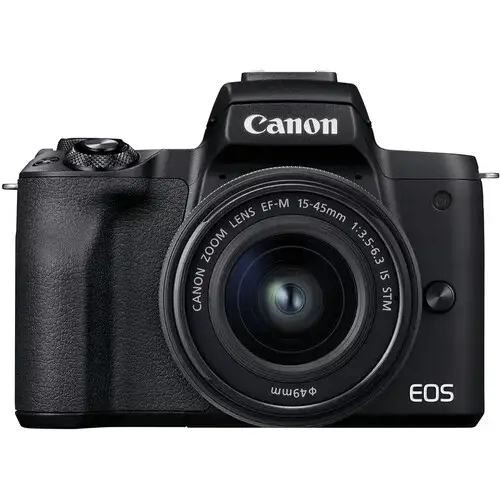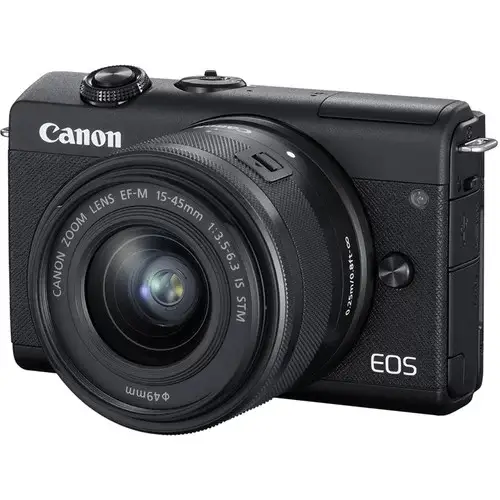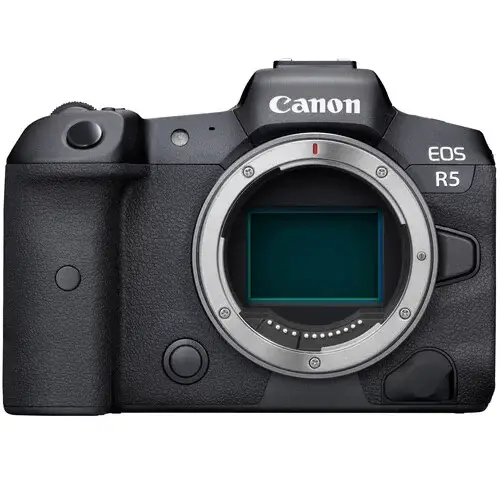Mirrorless cameras have become the preferred choice for many, especially vloggers, due to their compact size and high-quality video recording capabilities, even in low-light conditions. If you’re looking to step into mirrorless cameras for vlogging, this list is designed to assist you in selecting the perfect one to meet your specific requirements.
Mirrorless cameras are indeed a great choice for vlogging, especially if you plan to pursue vlogging for an extended period. The ability to upgrade lenses and continuously improve your camera’s capabilities over the years makes them valuable long-term investments.
While mirrorless cameras remain a top choice, they are most effective when equipped with essential features for vlogging, such as in-body stabilization, reliable autofocus, a flip screen, and an external microphone port. If your mirrorless camera lacks these features, it may be worthwhile to consider a point-and-shoot designed for video recording as an alternative.
When it comes to choosing the best Canon camera for vlogging, it largely depends on the type of vlogging you intend to pursue, such as talking heads, travel vlogs, or documentary-style content.
Here are the best Canon cameras for vlogging that we will discuss in this article:
Each of these cameras has its unique features and advantages that cater to different vlogging styles and preferences. It’s essential to consider your specific vlogging needs and budget when making a decision.
5 Best Canon Mirrorless Camera For Vlogging
1. The Canon EOS M50 Mark II
The Canon EOS M50 Mark II is the second iteration of Canon’s M-series mirrorless cameras to feature a fully articulating LCD touchscreen, and it’s the first to incorporate Canon’s advanced DIGIC 8 processor. This upgrade equips the M50 Mark II with an improved and faster autofocus system that covers a notably wider area compared to other Canon cameras like the M6, boasting 143 AF points, while the latter only offers 99 AF points.

The M50 Mark II is well-suited for vlogging, featuring a flip-out screen, an external microphone port, and an APS-C sensor – the same size used in DSLRs. Furthermore, it’s exceptionally lightweight, making it convenient for on-the-go shooting.
One noteworthy feature is the camera’s ability to shoot 4K video at 24/25p, an impressive capability considering its affordable price point. However, it’s important to be aware that 4K shooting with the M50 Mark II results in a crop factor, reducing the field of view and potentially limiting its suitability for 4K recording.
One downside to consider is the absence of in-body image stabilization. Canon typically relies on lens-based stabilization for their cameras, which might not be ideal for vloggers who require effective in-body stabilization due to their frequent movement.
Despite this drawback, the Canon EOS M50 Mark II remains a strong choice for vlogging, known for its reliable autofocus performance, even if it may not offer the best available image stabilization.
2. Canon EOS M6 Mark II
Canon EOS M6 Mark II, a versatile camera designed for creators and vloggers, offers significant improvements over its predecessors, M50 and M50 Mark II. It features a 32.5 Megapixel APS-C sensor, providing excellent performance in low-light conditions.

The M6 Mark II allows 4K vlogging without additional cropping, delivering full sensor readout through line skipping. The upscale to 4K is well-executed, offering sharp video with a high bitrate of 120Mbps, allowing for extensive post-production adjustments. Additionally, there’s a 120fps 1080p mode for slow-motion shots with impressive quality.
Compared to the M50, the M6 Mark II is more compact as it lacks an electronic viewfinder (EVF). It features a 180-degree tilting touchscreen. However, if you attach an external microphone to the hot shoe, it may obstruct the screen. L-brackets with a cold shoe can solve this issue, repositioning the microphone to the side.
The camera supports Wi-Fi and Bluetooth connectivity, enabling remote control through a smartphone and easy photo and video transfers for on-the-go sharing.
Thanks to its improved sensor, the M6 Mark II excels in low-light conditions. In 4K, it can reach ISO12800, with manageable noise reduction in post-production. The camera boasts Canon’s Dual Pixel Autofocus with eye detection for subjects, ensuring sharp focus even in low light (down to -5EV). Unfortunately, in 120fps mode, you lose autofocus and audio, but gain focus peaking for manual focus.
It’s worth noting that some users reported overheating after an hour of continuous 4K recording.
The Canon M6 Mark II is ideal for vloggers and creators seeking outstanding 4K video performance and excellent low-light capabilities in a compact package.
3. Canon EOS M50
The Canon EOS M50, while an older vlogging camera released in 2018, remains a capable choice for content creators and vloggers. It offers essential features and performs well, especially for those not needing the latest advancements in video standards.

For vlogging, it’s essential to stick to 1080p since the camera introduces a substantial 2.56x crop in 4K mode. This crop limits the effectiveness of ultrawide lenses. However, in 1080p mode, there is no significant crop, and it supports up to 60fps for smooth vlogs and slow-motion shots.
The camera’s 4K crop restricts the choice of lenses suitable for vlogging, and it’s challenging to achieve effective self-filming with limited compositional flexibility. In 1080p video mode, the M50 offers more options since it features a standard APS-C crop and supports interchangeable lenses.
With an EF to EF-M mount adapter, users can access a range of lenses for various scenarios. The external microphone support allows for high-quality audio recording, although the mic cable may obstruct the LCD when flipped. A low-profile right-angle mic cable helps mitigate this issue.
The camera provides Wi-Fi and Bluetooth connectivity for easy photo and video transfers to a smartphone, although transferring longer videos may take time. An OTG card reader can offer a faster solution.
The APS-C sensor performs well in low-light conditions, allowing usable videos at ISO6400. However, higher ISO levels introduce noise and color fidelity issues due to noise reduction algorithms and sensor dynamic range limitations.
The Dual Pixel Autofocus (DPAF) is reliable and works effectively in 1080p mode, tracking faces even in low light (-2EV). Unfortunately, in 4K, the camera relies on contrast detection autofocus, which is less reliable.
The electronic image stabilization crops the image, with the extent of cropping increasing with stronger stabilization. At its maximum, it results in a 1.4x crop. When used with image-stabilized lenses, it can provide gimbal-like stabilization.
The Canon M50 is suitable for vloggers prioritizing reliable 1080p video performance over the highest resolution. It offers a simple and effective solution for creating content.
4. Canon EOS M200
The Canon EOS M200 is a compact vlogging camera that shares similarities with the M50 but in a smaller, more portable form. It boasts the same sensor and Digic 8 processor, delivering excellent image quality, especially in 1080p video. However, it comes with limitations in its 4K video capabilities.

The M200 offers impressive 1080p video quality, making it a great choice for its size. It supports up to 60fps and provides a decent bitrate for video editing. In 4K mode, the video experiences a significant crop with a factor of 2.56x due to the camera’s APS-C sensor, unlike the standard 1.6x crop.
As an EF-M mount camera, the M200 is compatible with EF-M lenses and Canon EF lenses when used with an EF to EF-M mount adapter. However, it lacks an external microphone input, which may be a drawback for vloggers. The internal microphone provides decent audio quality for most use cases. Vloggers can consider using a lavalier microphone that records into a smartphone, allowing for audio synchronization in post-production.
The M200 features a 180˚ tilting touchscreen, enabling users to see themselves while vlogging. The absence of a hot shoe means there are no obstructions to the LCD screen. The camera also supports Wi-Fi and Bluetooth connectivity and offers vertical video shooting, making it suitable for quick sharing on social media platforms.
Equipped with a 24-megapixel sensor and the Digic 8 processor, the M200 delivers reasonable low-light performance. Video quality remains good at ISO1600, with usable footage at ISO6400, especially when applying noise reduction in post-production. However, 4K video in low light experiences more noise due to the lack of pixel binning.
In 1080p mode, the M200 benefits from Dual Pixel Autofocus with Face and Eye detection. The autofocus works well in low light conditions and can focus down to -4EV. In terms of image stabilization, it features electronic image stabilization, which can complement lens-based stabilization.
The Canon M200 is ideal for travel vloggers who prioritize portability and compactness over advanced features. Additionally, its clean HDMI output with retained Dual Pixel AF in 1080p makes it a suitable choice for streamers, provided that some potential overheating issues are managed.
5. Canon EOS R5
If you’re looking for a high-end option with unparalleled video quality, the Canon EOS R5 is an exceptional choice. This full-frame mirrorless camera boasts 8K video recording, in-body image stabilization, and remarkable low-light performance. While it comes with a higher price tag, the EOS R5 is a future-proof investment for serious vloggers.

The Canon EOS R5 is a remarkable full-frame mirrorless camera that boasts a wide range of features and capabilities. Here are the key specifications and details:
The Canon EOS R5 is designed for photographers and videographers seeking high image quality and advanced features. It offers excellent resolution with its 45-megapixel sensor and the powerful DIGIC X Image Processor. This combination results in stunning image quality and the ability to shoot in a wide range of lighting conditions, thanks to its ISO range.
One of the remarkable features of this camera is its high-speed continuous shooting capability, offering up to 12 fps with the mechanical shutter and up to 20 fps with the electronic (silent) shutter. The Dual Pixel CMOS AF system covers a significant portion of the frame, ensuring fast and precise autofocus.
Moreover, the camera employs deep learning technology for subject tracking, making it effective for capturing people and animals in various shooting scenarios. It includes dual memory card slots, ensuring you have ample storage for your content.
The Canon EOS R5 is also compatible with the RF5.2mm F2.8 L Dual Fisheye lens, adding creative possibilities for fisheye photography.
Additionally, the in-body image stabilizer enhances your ability to capture sharp and stable images, even in challenging shooting conditions. The camera’s High Resolution Shot mode enables the creation of exceptionally detailed images without the need for external software. This feature is beneficial for applications like art reproduction and signage photography.
The Canon EOS R5 offers an impressive array of features, making it a top choice for professionals and enthusiasts alike.
Conclusion
Canon offers a diverse range of mirrorless cameras, catering to vloggers of all levels. The best Canon mirrorless camera for vlogging depends on your specific needs, budget, and the level of quality you desire.
Whether you’re a beginner or an experienced vlogger, Canon’s mirrorless cameras provide the cameras you need to create captivating and professional content.


